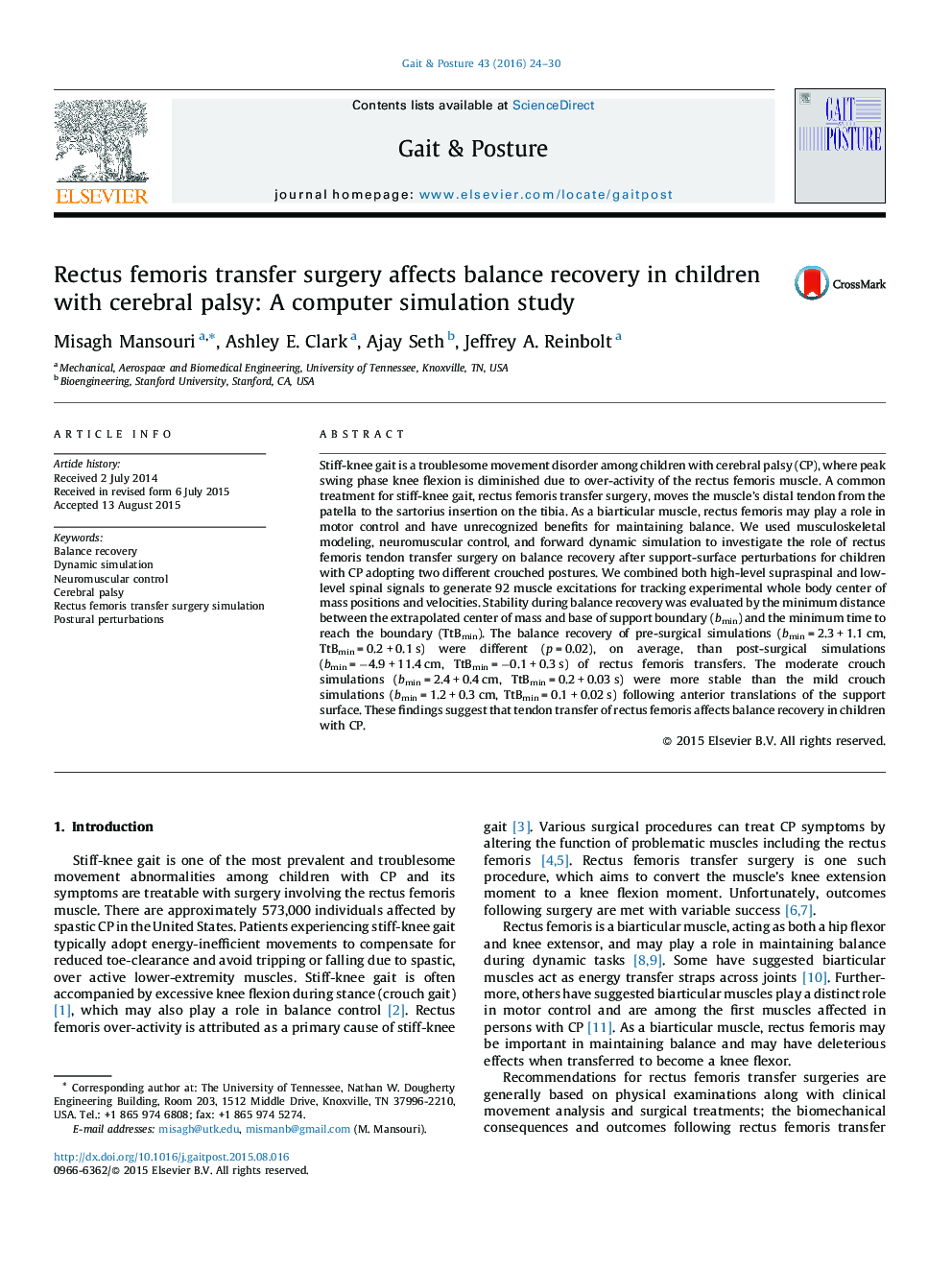| Article ID | Journal | Published Year | Pages | File Type |
|---|---|---|---|---|
| 4055824 | Gait & Posture | 2016 | 7 Pages |
•We investigated role of rectus femoris transfer surgery on balance of children with CP.•We combined both high and low-level controls for tracking experimental CoM positions.•Stability of pre-surgical simulations was different from post-surgical simulations.•Moderate crouch simulations were more stable than mild ones following anterior perturbations.
Stiff-knee gait is a troublesome movement disorder among children with cerebral palsy (CP), where peak swing phase knee flexion is diminished due to over-activity of the rectus femoris muscle. A common treatment for stiff-knee gait, rectus femoris transfer surgery, moves the muscle's distal tendon from the patella to the sartorius insertion on the tibia. As a biarticular muscle, rectus femoris may play a role in motor control and have unrecognized benefits for maintaining balance. We used musculoskeletal modeling, neuromuscular control, and forward dynamic simulation to investigate the role of rectus femoris tendon transfer surgery on balance recovery after support-surface perturbations for children with CP adopting two different crouched postures. We combined both high-level supraspinal and low-level spinal signals to generate 92 muscle excitations for tracking experimental whole body center of mass positions and velocities. Stability during balance recovery was evaluated by the minimum distance between the extrapolated center of mass and base of support boundary (bmin) and the minimum time to reach the boundary (TtBmin). The balance recovery of pre-surgical simulations (bmin = 2.3 + 1.1 cm, TtBmin = 0.2 + 0.1 s) were different (p = 0.02), on average, than post-surgical simulations (bmin = −4.9 + 11.4 cm, TtBmin = −0.1 + 0.3 s) of rectus femoris transfers. The moderate crouch simulations (bmin = 2.4 + 0.4 cm, TtBmin = 0.2 + 0.03 s) were more stable than the mild crouch simulations (bmin = 1.2 + 0.3 cm, TtBmin = 0.1 + 0.02 s) following anterior translations of the support surface. These findings suggest that tendon transfer of rectus femoris affects balance recovery in children with CP.
